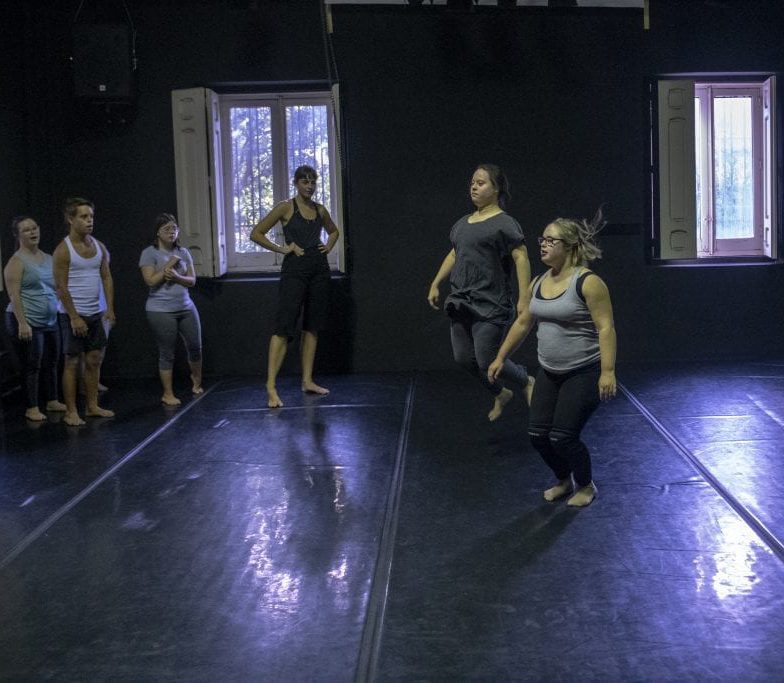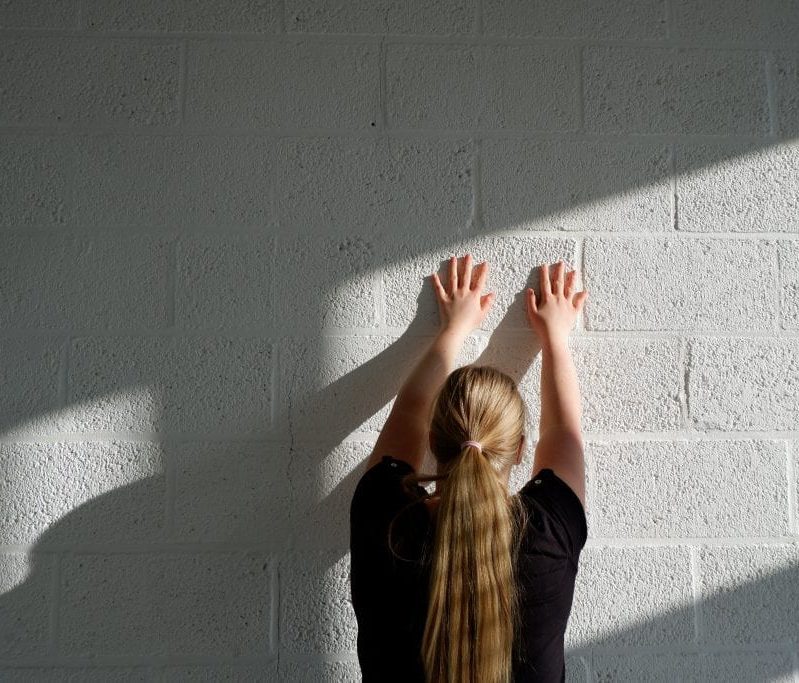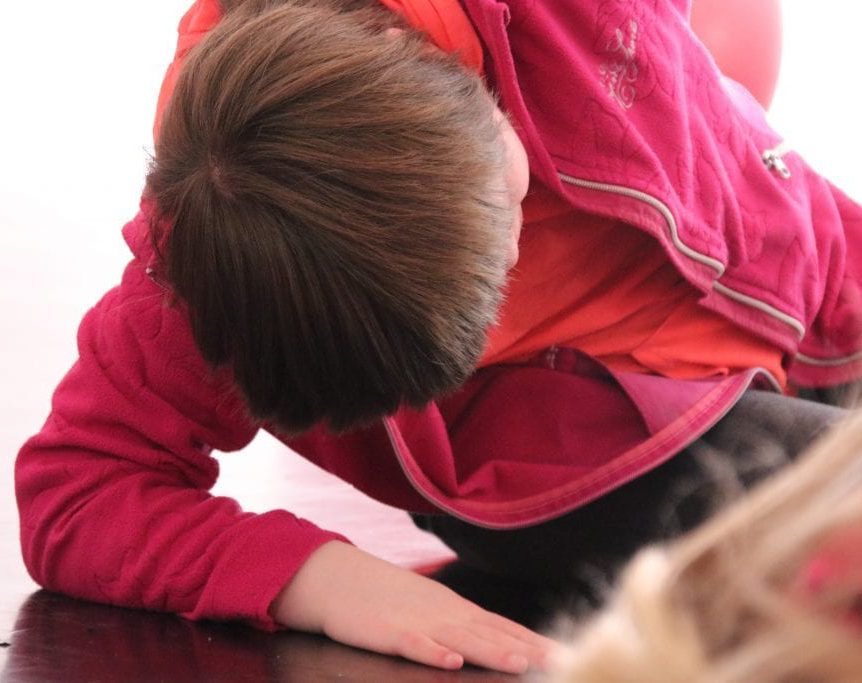Elevation
Elevation refers to the ability to move the centre of gravity efficiently between levels with control.
Elevation refers to the ability to move the centre of gravity efficiently between levels with control. This activity encourages dancers to explore this concept and extend their range.
The purpose of this activity is to develop the dancer’s ability to:
* safely move through the full range of the vertical plane
* find different ways of safely moving through levels (expand movement vocabulary)
* move through levels efficiently
* move through levels with control
As with all dance skills, a combination of elements is needed to come together that will determine the dancer’s capacity to achieve this successfully. Alignment, strength and use of effort all play a role in a dancer’s ability to move through levels safely, efficiently and with control.
In this activity the wall provides physical and psychological support for the dancer. It encourages them to take risks and extend their movement further than if they were in free space. The wall gives tactile feedback and develops awareness of different surfaces of the body, in the same way that floor work can. This external focus can be useful for dancers who have a strong internal focus, such as dancers with hypermobility. More information on hypermobility can be found here.
Preparation
For elevation activities to be executed safely and successfully, preparation is key. It is important to introduce the concept of softness and to give dancers time to embody it. This will enable them to explore their use of effort and discover the amount needed to descend and ascend with control.
Example Activity: guided exploration of softness
Introduce the idea of softness through tactile and visual resources, e.g. feeling sponges, a deep cushion and watching a scarf or piece of fabric fluidly move as it is slowly lowered to and out of the floor. Imagery of melting (candle, ice cream etc) can be useful to discuss.
Once in the space, bring your awareness to your feet and allow the whole foot to soften into the floor. Spend some time gently shifting the weight between the feet and feeling the edges and bones soften.
Allow the idea of softness to gradually travel to the knees and through the body as you begin to travel through the space.
Once in a space slowly melt into the floor, using your hands to guide you, onto your back. Slowly find a melting rise to your feet.
Encourage the dancers to explore travelling and finding different pathways into and out of the floor while embodying softness. A reminder to breathe can be useful as dancers often hold their breath when concentrating!
Jumping
To jump safely, good alignment and strength in the feet, ankles and legs is crucial. More information on building strength and good alignment in the lower leg can be found here.
Working with a large fitness ball can be a useful way for dancers to find alignment, correct action and engage the muscles required to execute a jump safely. The landing, finding control and a deep plie, is key to this. To build and maintain muscle memory such exercises need to be repeated regularly: ideally 2 or 3 times a week. For more information on such exercises go to the Progressing Ballet Technique (PBT) website via pbt.dance
The European Commission support for the production of this publication does not constitute an endorsement of the contents which reflects the views only of the authors, and the Commission cannot be held responsible for any use which may be made of the information contained therein.



Teaching Guidelines
This activity uses a wide range of teaching methods to appeal to different learning styles. Visual and tactile methods of communication are generally more accessible and effective for dancers with additional learning support needs. This activity works best in the second half of the lesson.
Using imagery can be an effective way of introducing the activity. Imagining you are spreading paint on the wall and floor is a useful visual image.
Once the dancer has mastered the basic concept, other developments can be made by:
* using different levels of resistance, for example pushing against the wall firmly or skimming the surface using it as a very light support
* leading with different body parts
* reaching or expanding in different directions
* working with a partner, follow the other’s pathways, mirroring or alternating levels
In this activity we used the following methods of delivery. However, you may find others on the list more suitable for your dancers:
Auditory
* verbal instructions
* use of voice (intonation, pace)
* use of music/sounds
* imagery delivered verbally
Visual
* physical demonstrations
* visual imagery (picture, object)
Tactile
* tactile cues given by self, peer, or teacher
* physical objects
Kinaesthetic
* experience how the movement feels e.g. resistance, pressure, effortless etc.
Feedback
* verbal feedback from peer or teacher
* visual feedback from peer or teacher
* tactile feedback from peer or teacher
* visual feedback and self-correction




